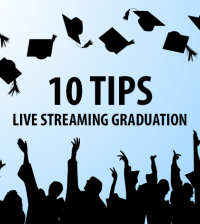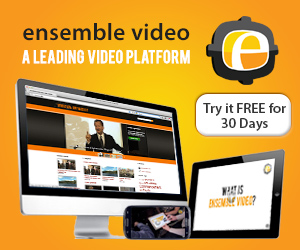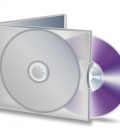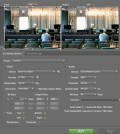How to Engage Students When They’re Unable to Attend Class

We often find ourselves in circumstances that make it difficult or impossible for students to attend classes. In recent global news, the coronavirus (COVID-19) has already caused some schools to cancel programs, courses and classes. There’s also discussion of potential quarantines to slow the spread of the virus. But school closures or class cancellations can happen for many other reasons as well, such as inclement weather or special events.
Your college or university needs to be prepared for remote learning in cases where students are unable to attend class. When students can’t make it to class in person, video technology provides a way for them to receive the material they need, submit assignments, and even complete quizzes to test their knowledge. Here are six ways that video technology can support remote learning at your college or university:
1. Simple LMS integration
Integrating video technology that works with your existing Learning Management System (LMS) simplifies the process for faculty and students. To enhance remote learning, educators can create and embed videos, playlists, dropboxes, and video quizzes within the LMS. (Read on to find out more about these different features.) Ensemble Video offers simple LMS integration for Blackboard, Canvas, Moodle, Brightspace by Desire2Learn, Drupal, WordPress, Sakai, and Schoology.
2. Zoom integration
A video platform that is integrated with Zoom will streamline your college or university’s video recording, management and distribution. Faculty can easily record lectures and demonstrations with Zoom’s cloud-based recording platform. With Ensemble’s Zoom integration, Zoom video recordings are automatically ingested into your Ensemble video library and can be published to any LMS, CMS, or website. Instructors can layer Ensemble Video’s searchable annotations over their videos to add information and interactivity. This type of technology allows faculty to easily record, organize and share important academic information with their students when in-person classes are cancelled.
3. Screen/desktop capture
For demonstrations and presentations, faculty can use a screen or desktop capture to record video through a webcam or capture screen movements with audio. Ensemble Anthem supports Mac and Windows screen capture and automatically uploads recordings to a user’s video library with the option to auto-publish to a designated playlist or LMS. Drawing and editing tools enhance screen capture recordings to maximize learning instruction. Ensemble Video also offers a Chrome Recorder Extension for Mac, Windows, and Chromebooks that allows users to upload, download, manage, and share videos without the need for external software.
4. Video assignments
Even when they can’t attend class, students still need to submit assignments for faculty to view and grade. A video platform like Ensemble provides a way for students to upload their video and audio assignments to an easily accessible Dropbox. This feature is a favorite among our customers. It’s easy for faculty to set up a Dropbox, create a unique URL, and share it with students so they can upload their content. Students can use the Dropbox without having to be registered users of Ensemble Video.
5. Mobile uploads
When teaching or learning remotely, having the flexibility to use a mobile device—such as an iPhone or iPad—to record, manage and share video content is essential. With Ensemble Video’s mobile app, students are able to easily record and submit video assignments with their smartphone or tablet. It’s as simple as scanning a QR code in the school’s Learning Management System (LMS) and the student’s content is automatically populated in their instructor’s media library. Faculty can use their mobile device to share recordings, manage their video library, and review and grade student assignments. With mobile access to assignments and recordings, faculty and students have more options for remote learning—anytime and anywhere.
6. Video quizzes
Video quizzing encourages video viewing and gives faculty an option for remote testing. Ensemble’s Video Quiz feature allows educators to create quizzes with their videos and publish them on their LMS, CMS or website. Questions can be multiple-choice, true or false, or multi-select checkboxes, and instructors can also add hints or explanations. Results are automatically sent to the instructor’s gradebook in the LMS, and faculty can drill down into the results by question or student, as well as export results to a PDF or CSV. Video quizzing is a convenient tool to engage students and measure comprehension of key concepts when in-class testing is not possible.












You must be logged in to post a comment Login